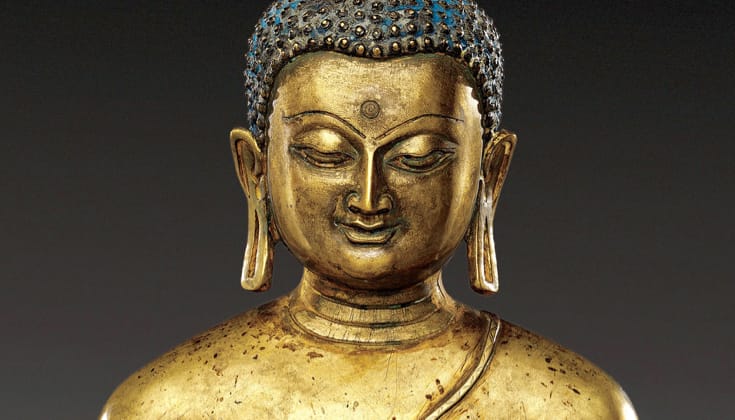Prof. Madhu Rajput* & Squadron Leader Toolika Rani (retd)*
(TibetanReview.net, Jun05’20)
The Indian eastern coast was yet seething from the massive destruction wrought by cyclone Amphan that another cyclone Nisarga appeared on the west coast. Humanity stares at the fury of nature being unleashed in myriad horrifying forms. We face the prospect of average global temperature rising to dangerous limits by the end of 21st century and the IPBES report 2019 on Biodiversity and Ecosystem Services alarmingly declared that the sixth mass extinction of flora and fauna was underway – specifically due to anthropogenic factors. This reminded me of an ancient proverb: “cutting the same branch on which he sat”. Rocking the same nest in which he lived. That human beings are the sole culprit of the environmental degradation became clear during the last few months. As the Covid-19 induced lockdown stalled economic activities, the environment around breathed a sigh of relief. The birds returned to their perch, the rivers sparkled as gems, the wildlife roamed without fear after a long time, and the air did feel like oxygen. Many of us realized for the first time that the earth was actually a beautiful planet. As humans return outside, will we be able to retain that serene glimpse or will the dance of destruction be resumed as usual, again on our own peril?
The scientific world is trying to create more energy saving devices and CO2 sucking artificial trees. But is this enough to ensure the environmental conservation or do we need to go deeper to find the root cause of the degradation and its solution? The Buddhist philosophy might show the way here. It maintains that most of the world’s problems including the environmental destruction stem from two vices of humans, ie lobha (greed) and dosa (aversion). Human greed and selfishness leads to the desire to accumulate material possessions which results in excessive exploitation of natural resources. The lack of concern regarding the consequences of one’s actions on the environment and other living beings brings disastrous outcomes for everybody, as ultimately all the components of nature are interrelated including human beings. Hence, the course of action to stem the environmental degradation shall widen its scope and include the psychological aspects along with scientific solutions. However much the machines take over the world, the fact remains that the man behind the machine is still more important.
Therefore, Buddhism attempted to bring awareness about the interdependence of the environment and the inhabitants and also of humans on each other. When we realise that our harmful actions towards others will ultimately harm us also, we may restrain ourselves in our own self-interest. As His Holiness the Dalai Lama says: “If you are going to be selfish, then you should be wisely selfish, not narrow mindedly selfish. From that viewpoint, the key thing is the sense of Universal Responsibility. If in our generation we exploit every available thing: trees, water, mineral resources, without bothering about the next generation, about the future, that’s our guilt, isn’t it? So if we have a genuine sense of universal responsibility, as the central motivation and principle, our relations with the environment will be well balanced.”
To instil this responsibility Buddhism stresses on working simultaneously on three aspects: behaviour, mind and understating. Buddha prescribed the code of conduct for monks which is recorded in Vinayapitska and guidelines for lay followers to regulate their external behaviour. These included the instructions to not pollute the streams and canals, not destroy the natural habitat while building quarters etc. For purifying the internal behavior Buddha advocated sila- the religious faith and moral training. The mind needs to be calmed by Samadhi (meditation) and a right perspective of harmonious co-existence with nature to be developed while eliminating the destructive and utterly disastrous thought of conquering it. One cannot grow beyond one’s habitat and nature as a whole is humans’ habitat. In addition understanding of the ‘cause and effect’ phenomena termed panya needs to be inculcated in order to initiate a realization of the effect of our deeds on the environment around. All three practiced together will trigger a behavioural change which alone can inspire us to make a conscious move towards a sustainable life style.
Loving-kindness and compassion – the core principles of Buddhism – prohibits us from doing any harm to any living being. If practiced, wouldn’t it be the solution to wildlife poaching and illegal trade and also of rapid deforestation? If we could realise that we have no right to take anybody’s life, be it a small insect or a giant elephant, as it disturbs the ecosystem and that they have as much right to this planet as we, wouldn’t it reduce the human-animal conflict that we witness today in peri-urban areas? If we let the mangroves grow on the coast and didn’t destroy them to construct tourism infrastructure, wouldn’t they benefit us by forming a barrier between the cyclonic waves and reducing its intensity?
Since we understand better if something affects us adversely, Buddhism links the concept of compassion to the theory of karma and rebirth. Harming the nature or its creatures will earn us bad karma and there is a real possibility of us suffering the consequence of that bad deed in the next birth. Thus to avoid pain and suffering to ourselves, we must abstain from harming others in this birth. Living by the virtues of compassion and restraint, we may get freed of the cycle of birth and death and get nirvana – the salvation. Religious beliefs may thus play a role in ensuring harmonious co-existence and minimum harm to environment by evoking a moral self- rebuke and acting as deterrent against a probable wrong action, such as killing an animal or cutting trees.
However, while the prevention of harmful actions by linking it to self-salvation may work for the masses, the ultimate goal of a human life shall be to grow beyond the shell of self. That’s what the concept of Boddhisattva is – the one who works for others’ betterment. As the Venerable Thubten Jampa puts it, “One technique to increase love and compassion and develop our capacity for universal responsibility is the ‘taking and giving’ meditation – tonglen in Tibetan. In this, we imagine willingly taking on the suffering of others to counter our own self-absorption and imagine giving all our happiness and well-being to others to expand our love and generosity. This helps us to live more harmoniously with others and with our environment.”
An example of how Buddhist ethos can be translated into practical policies to preserve environment is the tiny Himalayan country Bhutan. During my research for my books on Bhutan, I had the privilege to observe these policies on ground. Famous for its Gross National Happiness index, the nation has made a commitment to maintain minimum 60% of forest cover. A biological hotspot, Bhutan has kept a check on the speed and scale of developmental project and tourism. Another example is the Tibetan community which follows these ethos in its day to day life. The ultimate epitome of the Buddhist values His Holiness the Dalai Lama has kindled many a souls including me on the value of mindful living. His secret of retaining a child-like smile is a pure heart. And heart is where the solution of all problems reside. That’s what the Buddha taught – internal purification through meditation and control over desires, so that the inner tranquility may reflect in the outer environment – in words and deeds. A gentler self is the key to a gentler nature.
—
*Prof. Madhu Rajput, a faculty of History, Lucknow University, UP, India, is the author of eight bookson Tibetan women, Bhutan and North east India.
*Squadron Leader Toolika Rani is a retired Indian Air Force Officer and a Research Scholar in Ambedkar University, Lucknow, UP, India.







